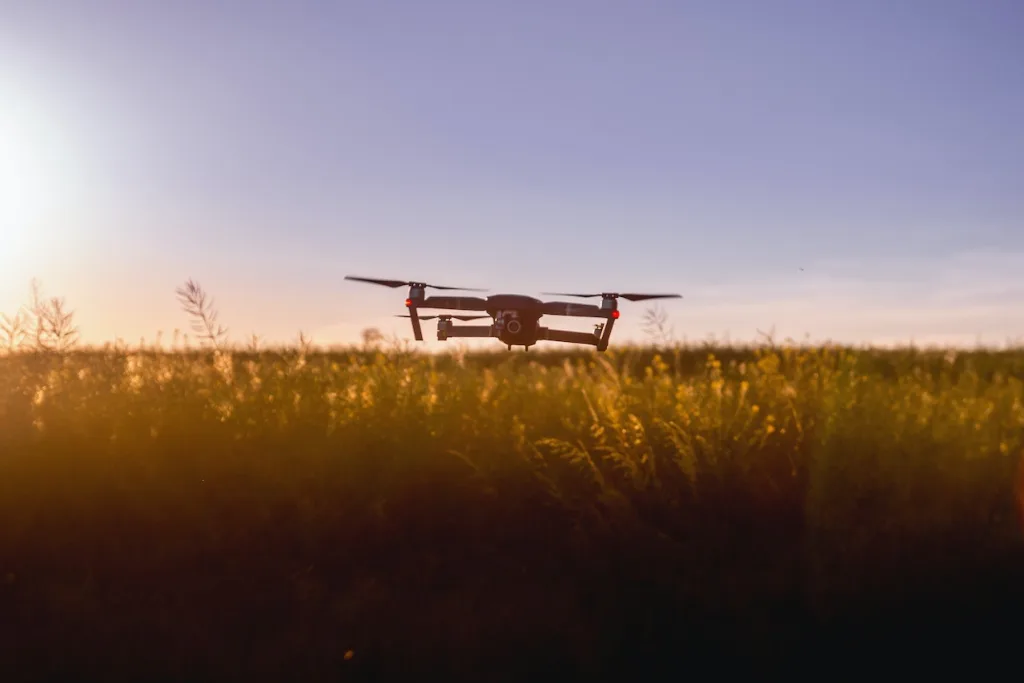Last Updated on October 24, 2023 by Ecologica Life
Table of Contents
Introduction
Artificial intelligence (AI) is a tool that could be humanity’s saviour or its downfall. Some ponder whether it will drive the next technological age, others whether if it will simply make humans lazy.
This technology has been used to improve productivity, efficiency, and security in all aspects of modern life. However, many people are concerned about the impact of AI on the environment.
In this article, we will analyse the environmental impact of artificial intelligence and discuss its advantages and disadvantages. We will also take a closer look at how businesses, governments and individuals can use AI to help protect the environment.
What is Artificial Intelligence?
The term “artificial intelligence” was first coined by John McCarthy. AI is a branch of computer science that focuses on the design of intelligent computer systems. These systems are capable of learning and reasoning. They aim to replicate thought processes associated with the human mind such as decision making and problem solving.
Types of AI
- Narrow AI (Weak AI): AI systems designed and trained for a specific task, such as recommendation systems like those used by Netflix.
- General AI (Strong AI): Systems that can understand, learn, and apply knowledge across domains. Something like what humans can do.
- Superintelligent AI: A future form of AI that would surpass human intelligence. This AI could potentially excel at all economic work and human activities. It would therefore have transformative effects on society that we are still debating.
Technologies and Approaches
- Machine learning: Allows computers to learn from data and improve their performance at tasks without being explicitly programmed how to do so. It is used in fraud detection, web search results, and real-time advertising.
- Deep learning: A subset of machine learning that uses neural networks to enable computers to learn from large amounts of data. It is the keystone for natural language processing and image recognition.
- Natural language processing (NLP): Enables computers to understand, interpret, and generate human language. This facilitates human-AI interaction. ChatGPT is a well-known example of an NLP application.
- Robotics: Integrates AI with mechanical engineering. This enables the creation of intelligent robots capable of performing tasks in a variety of environments. Environments that might be too dangerous for humans, such as outer space.
Examples and Progress:
AI has made monumental advances since its inception. Early breakthroughs include IBM’s Deep Blue, which defeated the world chess champion in 1997.

AI models such as ChatGPT offer groundbreaking possibilities. It is famous for its ability to write and sound like a human.
Other researchers are exploring the potential of Theory of Mind AI. This type of AI would be able to understand the needs, emotions, and thoughts of the people it interacts with.
Today, AI has penetrated many fields such as medicine, autonomous vehicles, and security.
For example, AI provides medical assistance to patients and helps drivers to make better driving decisions. AI systems are also used to analyse data to improve production in businesses. They are also used in facial and speech recognition software for security.
Impact of Artificial Intelligence on the Environment
Artificial Intelligence (AI) is rapidly changing the world. Its impact on the environment is significant and cannot be overlooked. Positive impacts of AI include improved management of natural resources, reduced energy consumption and environmental degradation.
AI could become an important tool in addressing some of the world’s environmental challenges. It has already shown some promise and potential in a field known as environmental engineering.
What is Environmental Engineering?
Environmental engineering focuses on the application of scientific and engineering principles to improve and maintain the natural environment. It involves the use of engineering, biology, chemistry, and other sciences to design and implement solutions to environmental problems. These solutions can include improving water and air quality, managing waste, and promoting sustainability.
The aim of environmental engineering is to promote the sustainable use of natural resources while minimising or eliminating negative environmental impacts.
Applications of AI in Environmental Engineering
AI has several potential applications in environmental engineering, including:
- Predictive maintenance: AI systems can predict equipment failure in advance. For example in wind turbines, AI predicts when components need maintenance or replacement. This reduces downtime and extends lifespan of the turbines.
- Energy management: AI can help optimise energy use in buildings and facilities. This reduces energy consumption, and lower carbon emissions.
- Pollution monitoring: AI can use data from sensors and satellites to find pollution, track its sources, and help reduce pollution levels. The Breezometer is a good example of this.
- Water management: AI can monitor water quality, predict water demand, and identify leaks in the water supply system.
- Waste management: AI can analyse data on waste generation and disposal, optimise waste collection routes, and identify recycling opportunities.
- Climate modelling: AI can analyse large amounts of data from climate sensors, satellites, and other sources.
Overall, AI has the potential to revolutionise environmental engineering by enabling better management of natural resources and reducing environmental impact.
Using AI to Solve the Big Problems
AI and environment sustainability are two concepts that can be linked to solve nature’s big problems. Examples include climate change, deforestation, and the problem of microplastic pollution. AI systems can also help design and operate green infrastructure, such as alternative energy systems, smart buildings, and sustainable transport systems.
Let’s look specifically at AI and climate change. Climate change is a global crisis that requires expertise from a wide range of disciplines, including scientists, engineers, economists and more.
One of the key problems with climate change is that there are so many variables at play. We often talk about the climate problem in very narrow terms. We focus on carbon footprints, as if carbon was the only key driver of climate change.
Climate change involves a wide range of parameters including ecology and the Earth’s natural cycles, which are constantly changing. To understand this problem, we need to collect huge amounts of data, which is not inherently easy for our mammalian brains to analyse and interpret. This is where AI can come in.
Deep learning models can analyse huge amounts of data and identify patterns that are not easily recognised by humans. Examples include DeepMind’s AI for predicting rainfall, or IBM’s GRAF model for more accurate weather forecasting.
Deep learning AI models can be used in a number of ways to tackle climate change. For example, you can train the model to analyse climate data and make predictions about future climate patterns.
These predictions can be used to inform policymakers, businesses, and individuals about the potential impacts of climate change. This can then be used to develop mitigation and protection strategies.
In urban areas, AI-enabled smart devices can detect, sort and recycle waste more efficiently, helping to reduce waste and pollution. It can also help cool cities by designing ways to green cities or create wind channel architecture. One example includes Siemens’ City Air Management tool, which provides city planners with solutions to reduce air pollution.
AI can be a powerful tool. It can help protect the environment and improve the quality of life for everyone. AI has the potential to make a positive difference.
AI and Environmental Sustainability
Advances in artificial intelligence technologies can also help improve the management of natural resources. Machine learning systems, satellites, and ground sensors can monitor deforestation, soil erosion and the exploitation of natural resources. This provides information to assess the environmental impact of human activities.
This is already being used in projects such as Global Forest Watch, which uses AI to monitor forests in near real-time.
Computer vision AI can be used to monitor forests and detect changes in vegetation, tree cover, and deforestation. This can help researchers and policymakers understand how human activities affect the environment and develop plans to reduce deforestation and forest damage.
In addition, AI systems can help predict the future availability of natural resources and provide information to support decision making.
Negative Impact of AI on Environment
We have talked extensively about the pros of AI, but what are the cons of AI?
First, we should consider the carbon footprint of artificial intelligence. Energy consumption is one of the significant disadvantages of artificial intelligence. AI systems consume a lot of energy. If they don’t use renewable energy, it can lead to more fossil fuel pollution being released into the air and atmosphere. This is a significant ESG risk.
How Much Energy Does AI Use?
AI technologies, particularly large-scale machine learning models, are notorious for their significant energy consumption.
The complex process of training models, such as those used in natural language processing and image recognition, requires colossal computing power. This is largely facilitated by graphical processing units (GPUs) or more specialised software.
A study published by the University of Massachusetts found that training large AI models can emit more than 626,000 pounds (284,000 kg) of carbon dioxide equivalent. This is almost five times the lifetime emissions of the average American car (including its manufacture).
AI Debate Topics
Recently, an open letter was signed by researchers, institutional leaders, and even social media CEOs like Elon Musk. They called for an immediate halt to all developments in artificial intelligence. They cited “profound risks to society and humanity” as the reason for their request.
But these fears are less about the environment than about human survival. Many people believe that AI will soon pass the Turing test, become self-aware and decide to destroy us. A sacked Google engineer believes that the LaMDA chatbot is sentient.
At this stage, we are still unsure whether AI can help correct human errors, or whether this technology will be our biggest mistake yet.
Impact of Artificial Intelligence on Agriculture

AI can help farmers improve crop yields and reduce the use of fertiliser, pesticides, water and other resources.
Machine learning systems can be used for many applications. For example, they can predict when irrigation is needed to avoid using too much water. This can help conserve our water resources. Drones can also be programmed to detect pests or diseases in crops, helping to limit the use of pesticides.
Computer vision AI enables computers to interpret and analyse visual data from the world, such as images and videos. It involves training algorithms to understand the content of images and videos by identifying patterns, features, and relationships within them.
This has already been applied to John Deere’s AI technologies that are used in precision agriculture to monitor crop health and optimise farming practices.
These innovations can not only improve agricultural production, but also reduce the risk of environmental pollution.
AI Opportunities
There is a huge potential for businesses, institutions, NGOs and even governments to use AI to help tackle the big issues. Issues such as climate change, the microplastic pollution problem, biodiversity loss, and world hunger.
Opportunists should look at targeting AI at the street level, helping individuals and local businesses to become more environmentally friendly.
Conclusion: Is AI Environmentally Friendly?
In summary, artificial intelligence has an important role to play in our efforts to protect the environment. AI offers greater efficiency in agriculture, natural resource management and pollution reduction.
It allows us to gain more information about the environment and make better decisions to protect it. Artificial intelligence is therefore an invaluable tool for improving conservation and environmental protection efforts.









1 comment
Nice article David! you’ve covered a lot of content here. Time will tell how AI evolves and us along with it…